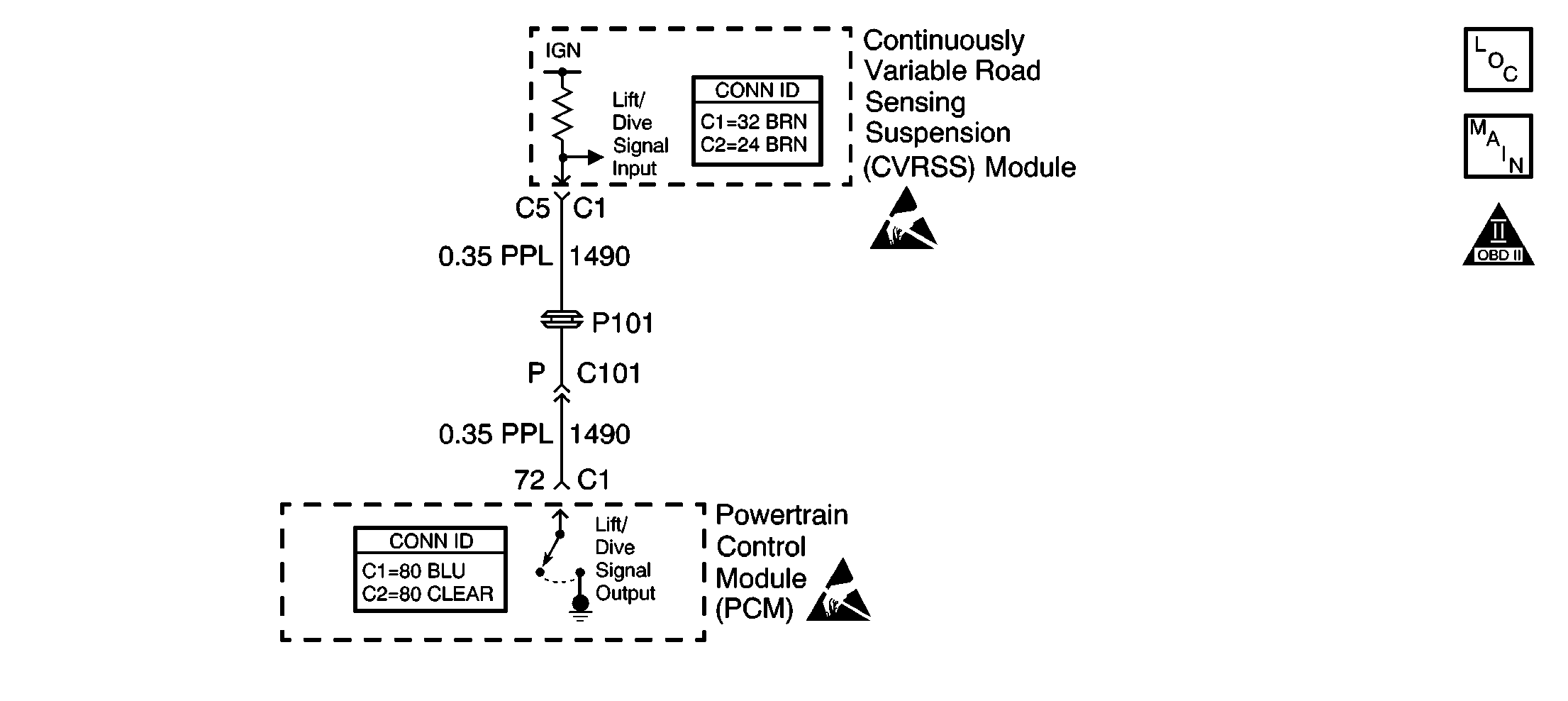
Circuit Description
The PCM uses output driver modules (ODMs) to control many functions of the engine, and the transaxle. The ODMs supply the ground path for the PCM controlled device when the PCM commands the device ON. Each ODM is able to control several outputs. Unlike the quad driver modules (QDMs) used in earlier model years, the ODMs are able to diagnose each output circuit. The PCM monitors the ODMs for circuit conditions that are incorrect for the commanded state of the ODM. If the PCM detects an improper circuit condition in the ODM that controls suspension Lift/Dive, DTC P1652 will set.
Conditions for Running the DTC
| • | The engine is running. |
| • | The system voltage is between 8 and 16 volts. |
Conditions for Setting the DTC
| • | The PCM detects a circuit conditions that is incorrect for the commanded state of the ODM that controls suspension Lift/Dive. |
| • | The condition is present for at least 10 seconds. |
Action Taken When the DTC Sets
| • | The PCM will not illuminate the malfunction indicator lamp (MIL). |
| • | The PCM will store the conditions present when the DTC set as Failure Records data only. |
Conditions for Clearing the MIL/DTC
| • | The history DTC will clear after 40 consecutive warm-up cycles have occurred without a malfunction. |
| • | The DTC can be cleared by using the scan tool Clear DTC Information function. |
Diagnostic Aids
If the condition is intermittent, refer to Intermittent Conditions .
Step | Action | Values | Yes | No |
|---|---|---|---|---|
1 | Did you perform the Powertrain On-Board Diagnostic (OBD) System Check? | -- | ||
2 |
Is the test lamp ON? | -- | ||
3 |
Did you find and correct the condition? | -- | ||
4 |
Is the test lamp ON? | -- | ||
5 |
Did you find and correct the condition? | -- | ||
6 |
Does the DMM indicate a voltage near the specified value? | B+ | ||
7 |
Did you find and correct the condition? | -- | ||
8 |
Did you find and correct the condition? | -- | ||
9 | Replace the continuously variable road sensing suspension (CVRSS) Module. Refer to Electronic Suspension Control Module Replacement in Road Sensing Suspension (RSS). Is the action complete? | -- | -- | |
10 |
Important: The replacement PCM must be programmed. Replace the PCM. Refer to Powertrain Control Module Replacement/Programming . Is the action complete? | -- | -- | |
11 |
Does the scan tool indicate DTC P1652 passed? | -- | System OK |
